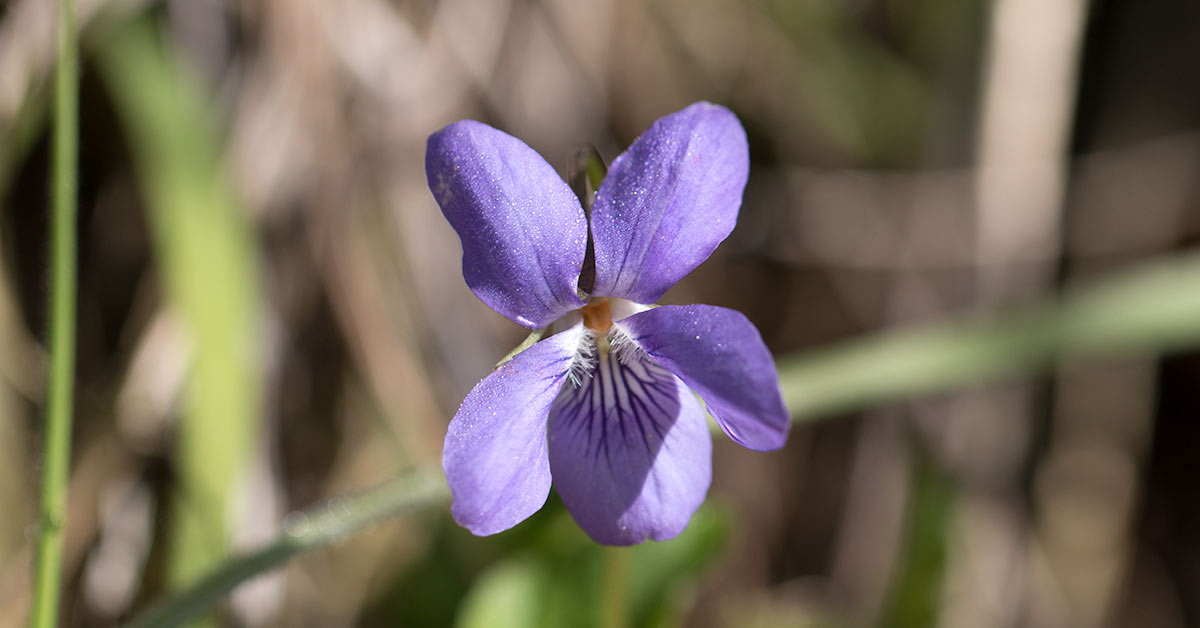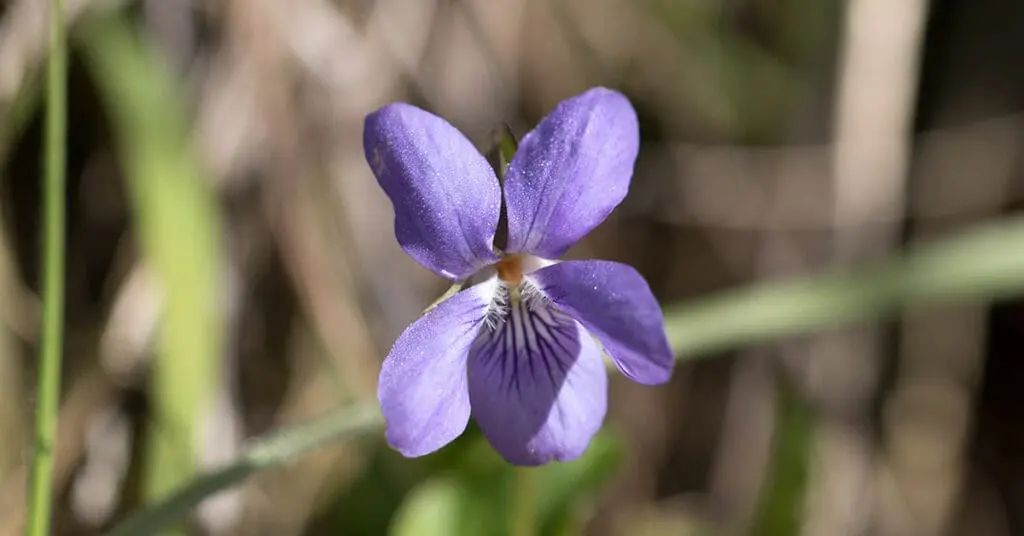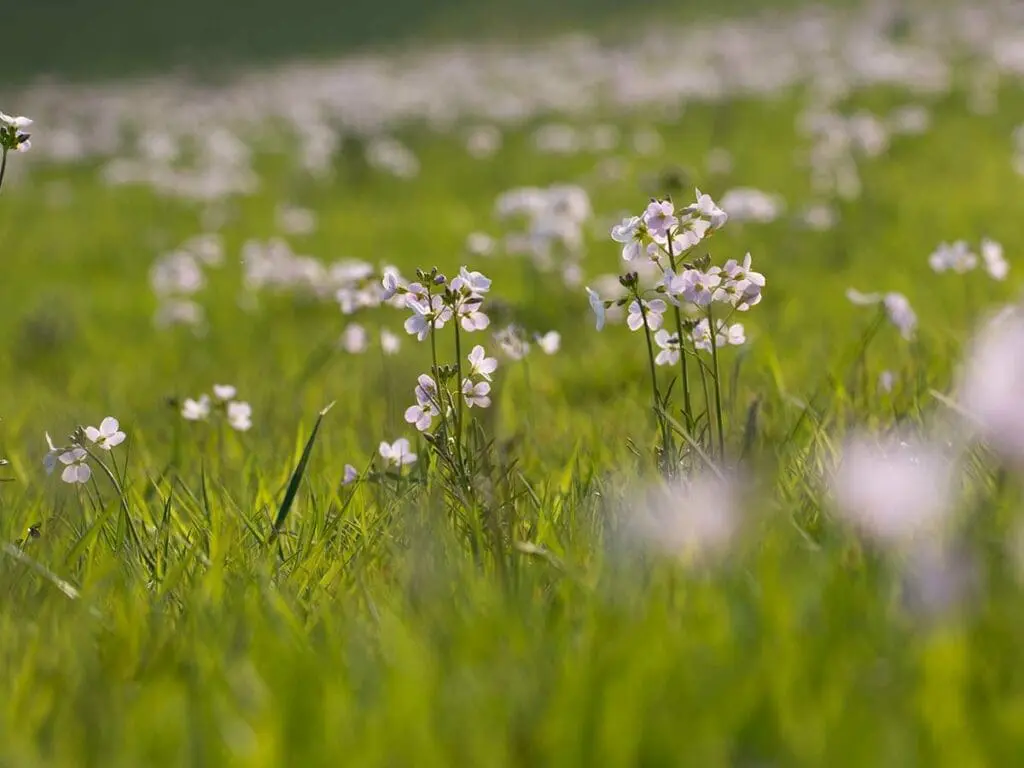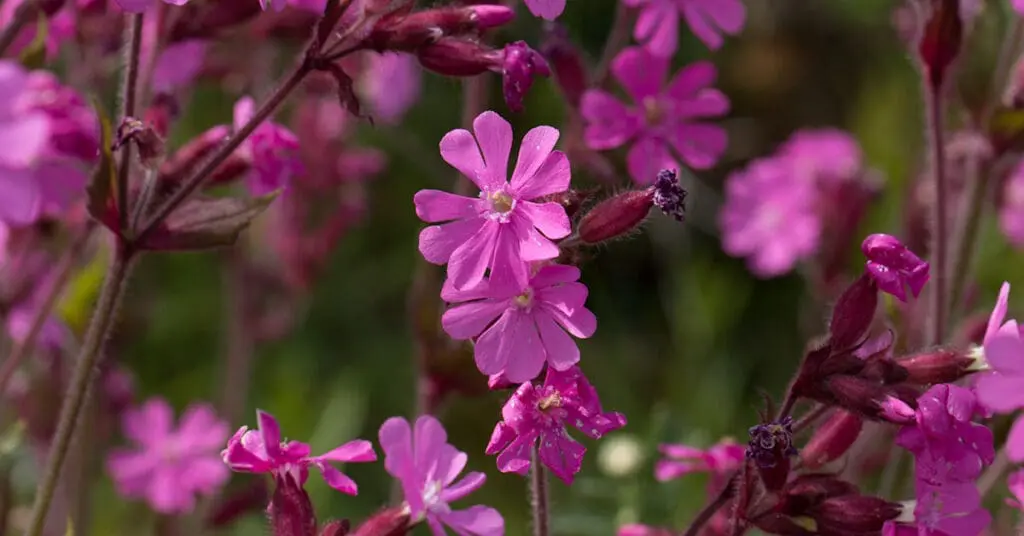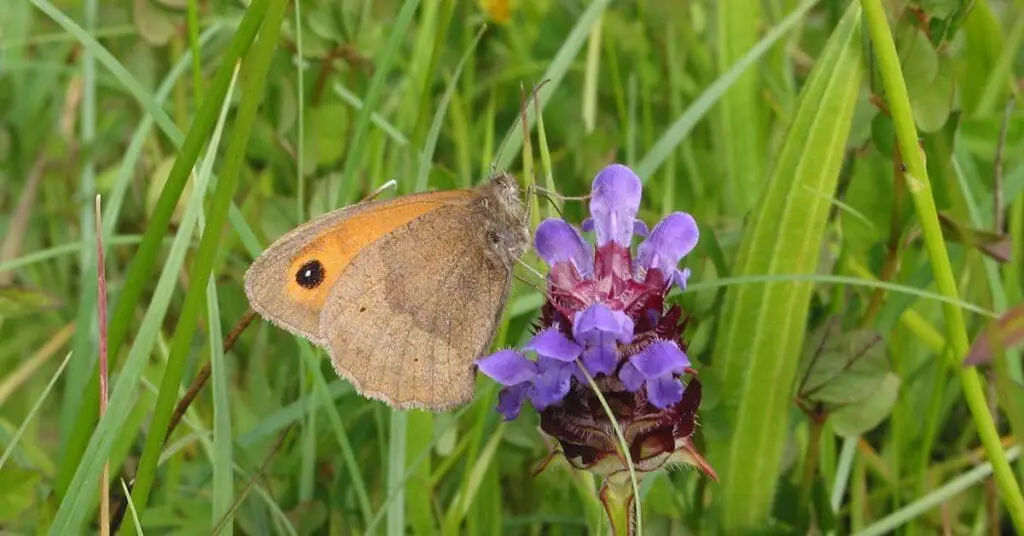- Scientific name: Viola riviniana
- Family: Violet (Violaceae)
- Found in: Grassland, Woodland, Upland
The Common Dog-violet is so called due to its lack of perfume – the word ‘dog’ being used to mean it was considered inferior to the Sweet Violet (Viola odorata), its close relative, which is quite fragrant.
It is often found in deciduous woodland, hedgerows and old pastures and is not considered to be threatened.
Its flowers vary in colour from bluish-violet through to white and appear from March to May. Individual flowers are small but in such profusion that the plant can be conspicuous from some distance. The plant itself can vary quite significantly and may have either hairless or slightly hairy stalks. It is a herbaceous perennial with heart-shaped leaves and grows well on acid and calcareous, well-drained soils.
The Common Dog-violet can produce two types of flowers on the same plant. As well as ordinary open flowers, most members of the violet family including Common Dog-violet have the ability to produce “cleistogamous flowers”. These are flowers which do not open but are able to fertilise themselves.
Fertilised flowers produce seeds in capsules which can be hurled out by an explosive mechanism. As there is little wind on the woodland floor this helps to give the plant a better chance to spread themselves. They are also attractive to ants, which can help in seed dispersal.
Although there are no medicinal uses known of the Common Dog-violet, it is possible to eat the young leaves and flower buds – raw or cooked. A tea can be made from the leaves and when added to soup they thicken it in much the same way as okra.
Propagation
From seed
Seed is best sown in the autumn in a cold frame. Alternatively, sow stored seed in early spring. Prick out the seedlings into individual pots when they are large enough to handle and plant them out in summer.
By division
Plants can be divided in the autumn or just after flowering. Larger divisions can be planted out directly into their permanent positions. It is better to pot up smaller divisions and grow them on in light shade in a greenhouse or cold frame until they are growing well. Plant them out in the summer or the following spring.

